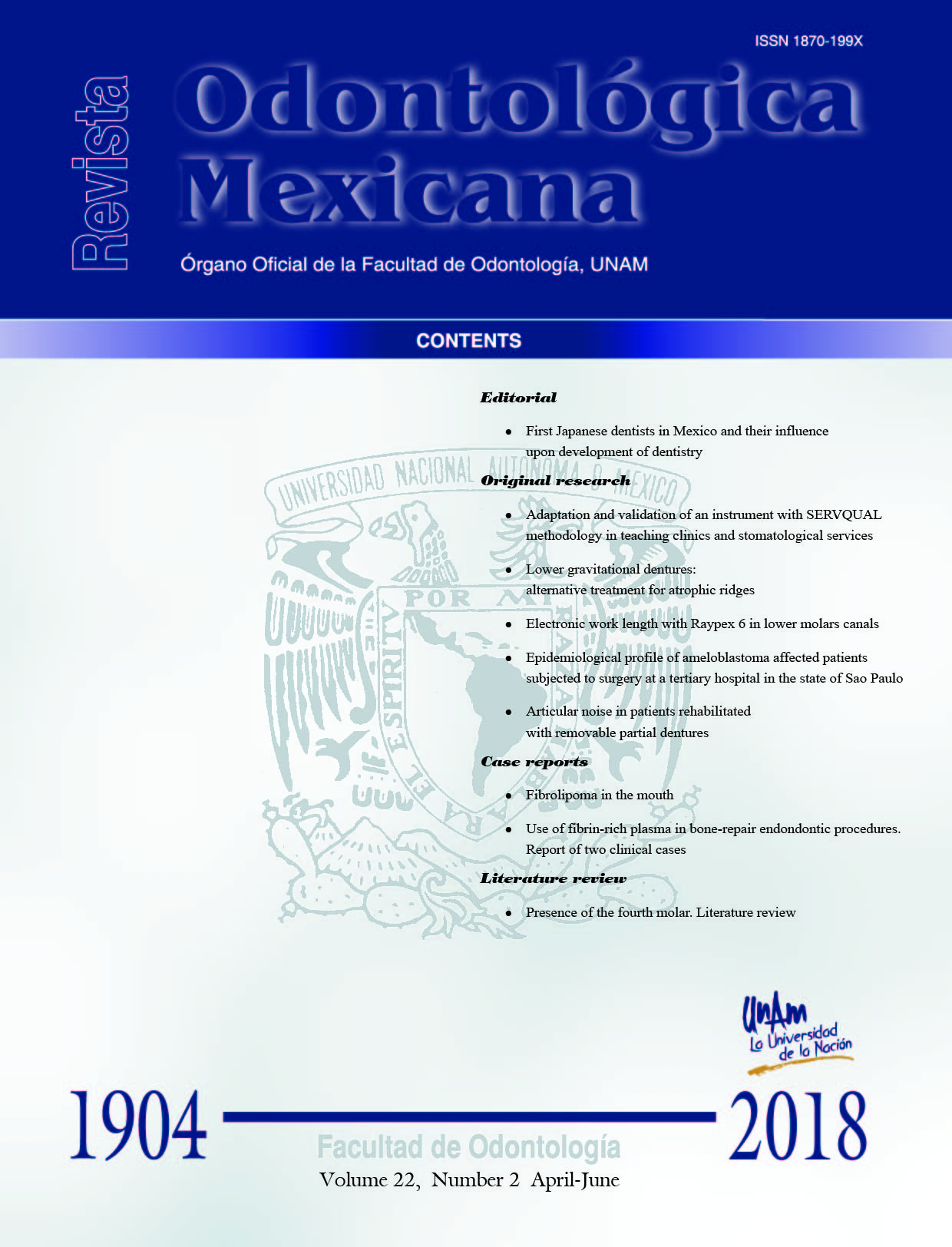Electronic work length with Raypex 6 in lower molars canals
Contenido principal del artículo
Resumen
Objective: To assess precision of Raypex 6 to locate foramen and establish placement in the canal -dentin-cement (CDC) area in lower molar canals by means of diaph anization. Material and methods: 52 permeable canals from 20 extracted lower molars immersed in alginate were used. Crown opening, location, permeabilization and irrigation with 5.25% sodium hypochlorite were performed. Electronic conductometry was obtained with Raypex 6 electronic locator. A K #15/20 fi le type was inserted in all samples which had labial clip inserted in alginate. The device’s screen indicated position of the apical foramen in the red bar, K fi les position was readjusted in the fi rst two yellow bars, the fi le was then fixated with acrylic resin. Teeth were diaphanized by means of the nitric acid technique; teeth were kept in methyl salicylate. Samples were analyzed with clinical microscope at 16x, they were subjectively assigned a value called precise when the tip of the fi le was located at 0-0.5 mm, external or positive (+), when the fi le was +0.1 mm or more, and short or negative (-) when it was -0.51 mm or less with respect to the apical foramen. Results: Of the 52 analyzed samples, 40 were found to be precise, seven long and five short. Descriptive statistics showed 76.9% precision. Conclusion: Electronic working length with Raypex 6 showed suitable precision in mesial canals of lower molars.
Detalles del artículo
Cómo citar
J Broon, N., Cruz, Álvaro, Palafox Sánchez, C. A., Padilla Delgado, R. S., & Torres Camarena, A. (2018). Electronic work length with Raypex 6 in lower molars canals. Revista Odontológica Mexicana Órgano Oficial De La Facultad De Odontología UNAM, 22(2). Recuperado a partir de https://journals.unam.mx/index.php/rom/article/view/65273
Citas en Dimensions Service

Revista Odontológica Mexicana por Universidad Nacional Autónoma de México se distribuye bajo una Licencia Creative Commons Atribución-NoComercial-SinDerivar 4.0 Internacional.
Basada en una obra en http://revistas.unam.mx/index.php/rom.


